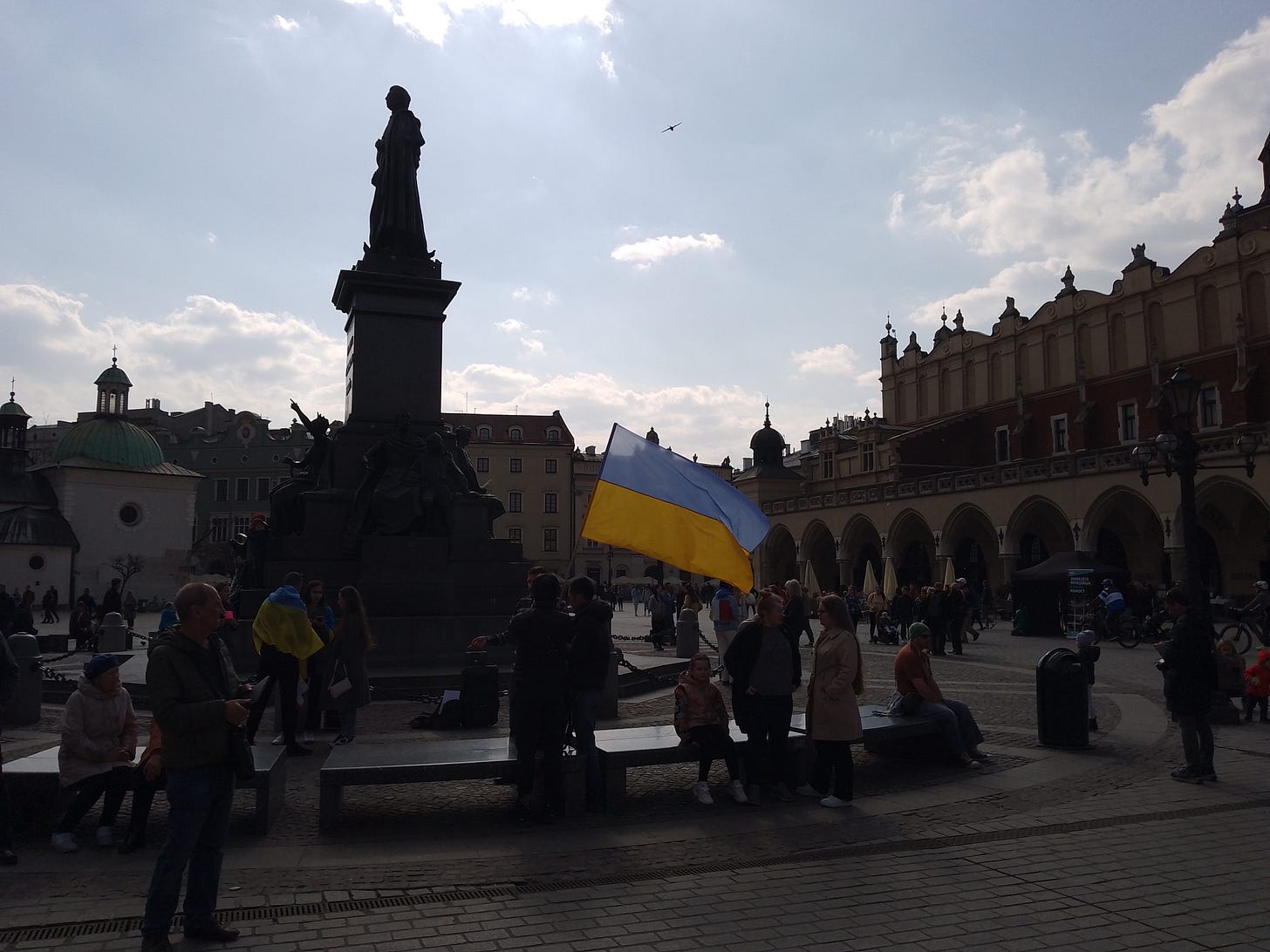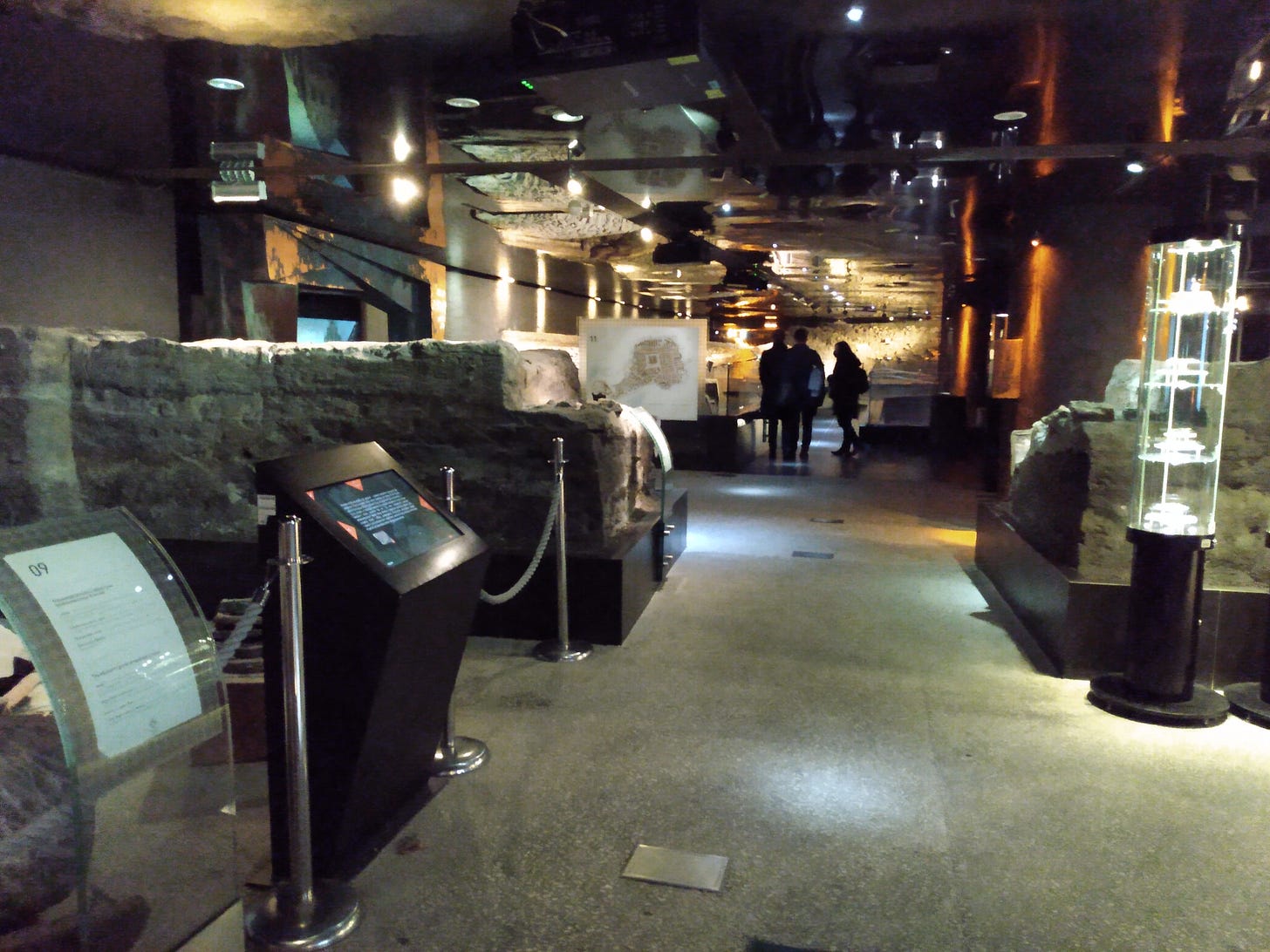While Polish architecture is commonly associated with dull Communist-era housing, Kraków’s Old Town survived World War II and is recognized as a UNESCO World Heritage Site. At the center of the historic area is its massive rynek (town square), laid out after the Tatars destroyed the city in 1241, and today the middle of its rynek has three historic attractions arranged on top of each other.
The attractions are all in (or under) the Cloth Hall, built in the 16th century as a marketplace. Today, vendors sell more souvenirs than cloth to tourists, many of whom don’t even realize there are museums above and below the stalls. When teaching the word “tourist trap” in one of my classes, a student used the Cloth Hall as an example. That being said, the building is conveniently located and is richly decorated.
But those looking for more substance than stalls selling “I Love Poland” shirts can go up or down. Below the Cloth Hall (and much of the rynek) is the Rynek Underground Museum. Archaeological discoveries found during a renovation of the square were left in place, and visitors can now see medieval layers of roads and dirt alongside artifacts and high-tech displays.
It sounds a bit cooler than it is in practice. It’s fun to comprehend that the stones before you were used as a road six centuries ago, but roads are not particularly interesting to look at (and the dim lighting throughout much of the museum does not increase excitement). And while its fancy projections are more high-tech than traditional museum dioramas, they don’t create the same sense of place like good walk-through dioramas do (it pales compared to the Milwaukee Public Museum’s Streets of Old Milwaukee, for instance). It's still nice, but if you want to really feel like you’re in the Middle Ages, you’re better off going to a castle (more on that in a future issue).
The Gallery of 19th-Century Polish Art is a branch of the National Museum in Kraków located in the Cloth Hall above the busy marketplace. You’re not likely to have heard of the paintings inside but you shouldn’t let that stop you from going inside. As the name says, most of the paintings were made in the 19th century, when “Polish” referred to a language and a culture but not a country, as Poland was divided up by the Prussians, Russians, and Austrians at the end of the 18th century. This gives many of the paintings a sense of yearning towards statehood, which a pocket tour guide can really help to explain and fit into a larger context. ( I used Rick Steves Snapshot: Kraków, Warsaw & Gdańsk.)

The aspirations of those painters hoping to see an independent Poland are represented with paintings of Poland’s glory days, while their understandings of the 19th century reality can be seen through the ways they symbolize Poles, whether as a farmer pushed aside by soldiers or as Christians persecuted by Nero.

The museum is medium-sized, so if you get tired by expansive art museums you’ll be able to handle this one. And given its location, once you’ve seen its paintings there’s a lot more to see nearby, with St. Mary’s Basilica and Wawel Hill both a short walk away.
New Article:
Why Russia is using dolphins to guard its navy ships. No, that’s not a code name.
https://www.nbcnews.com/think/opinion/russias-use-dolphins-guard-navy-ships-isnt-farfetched-rcna26523




